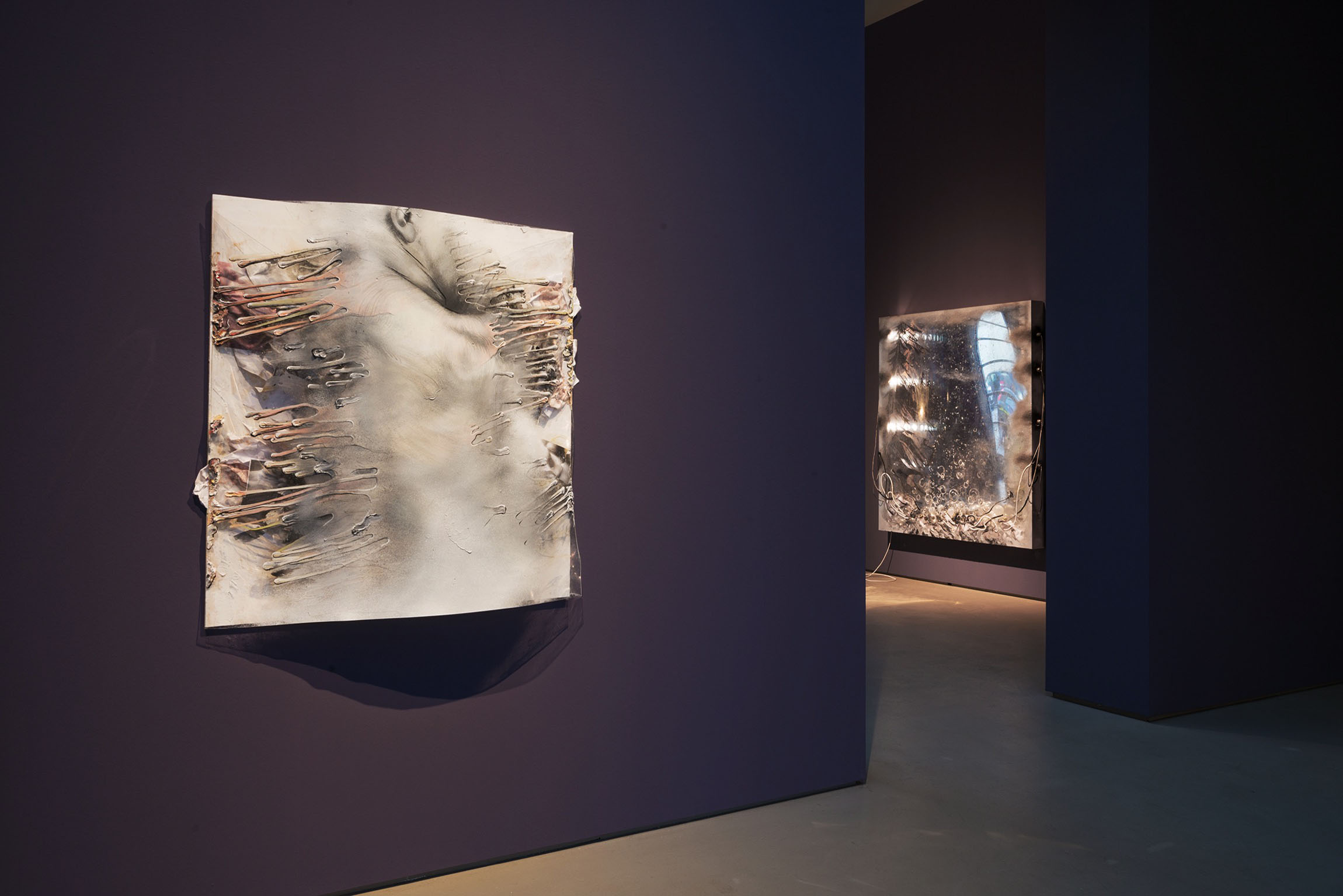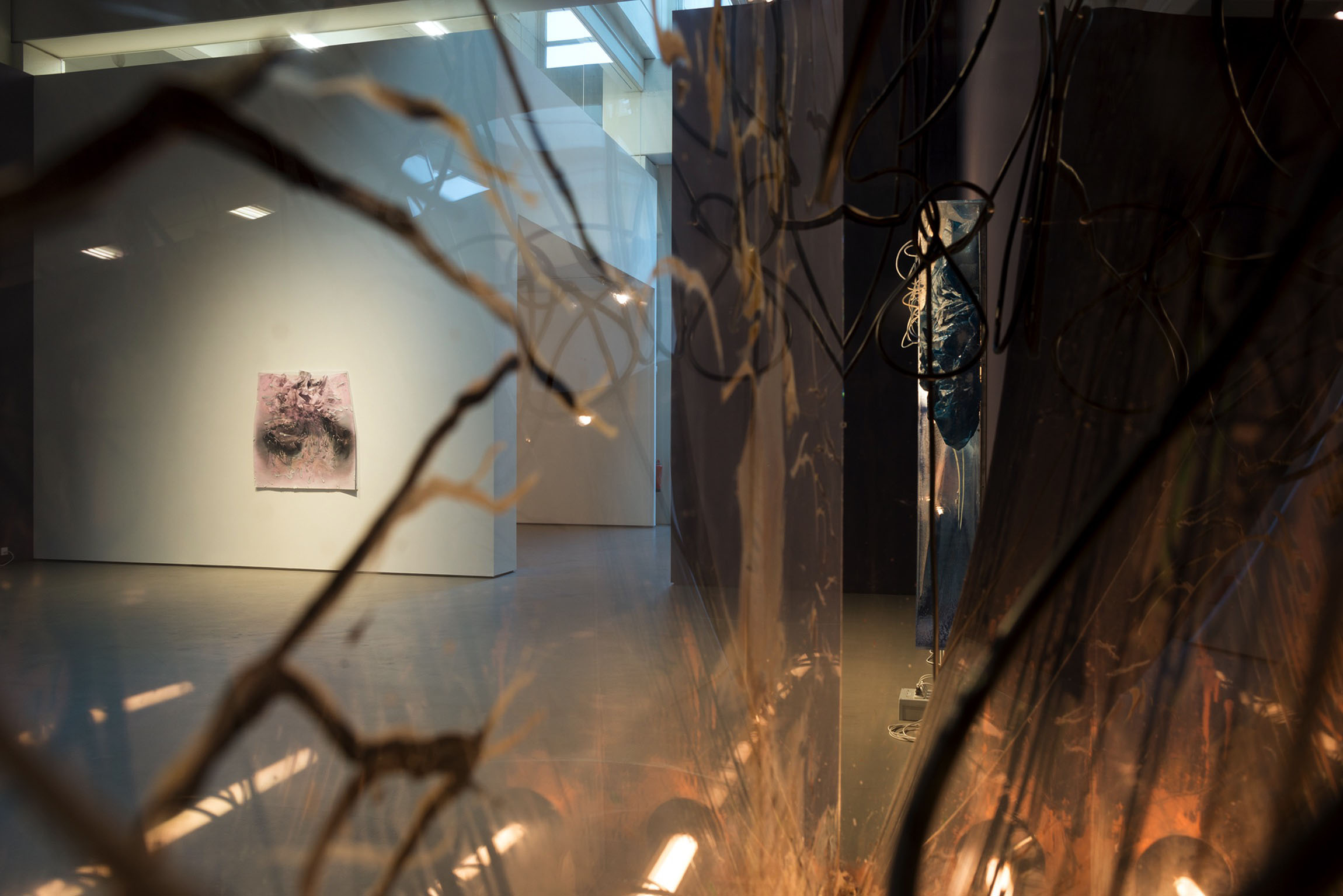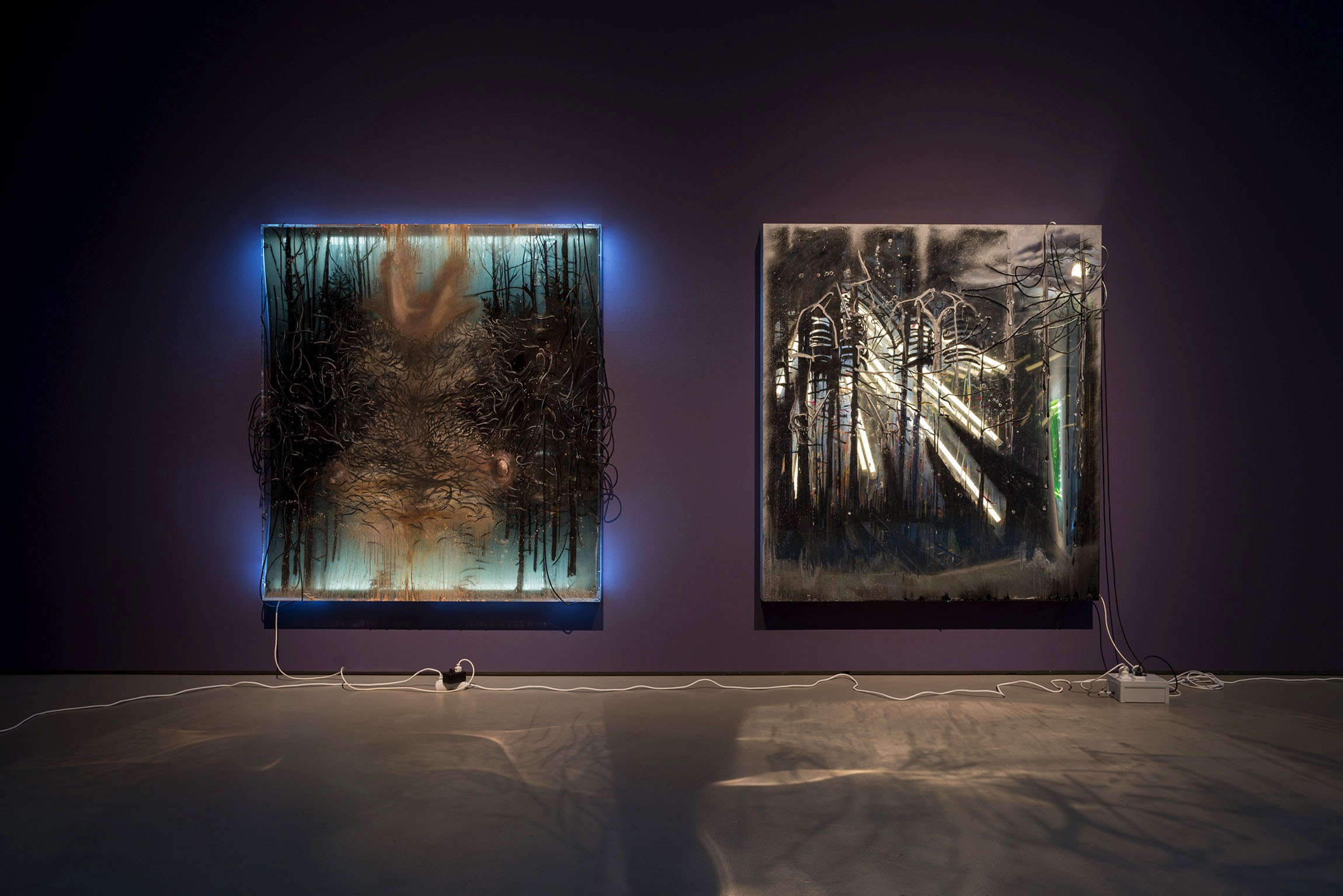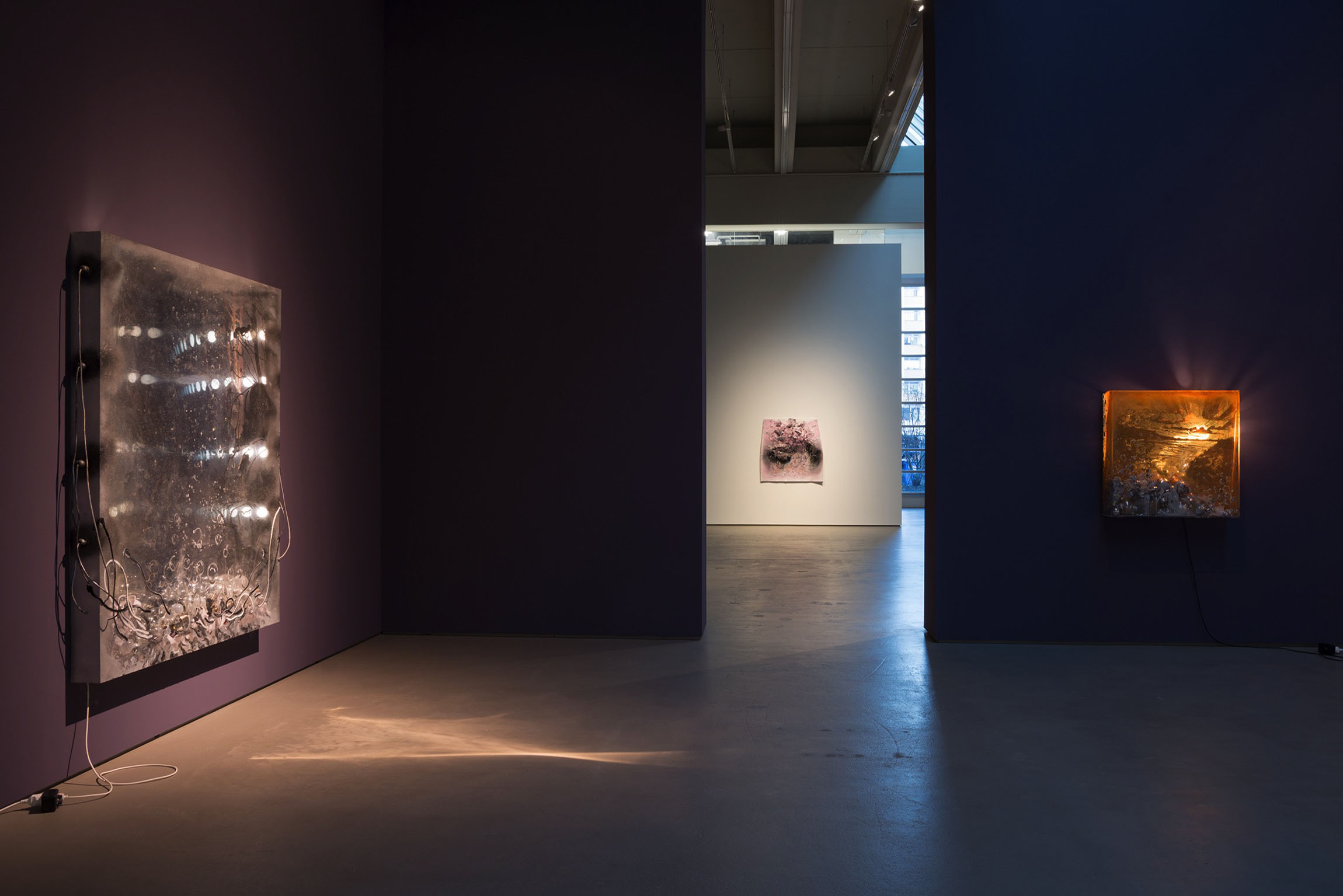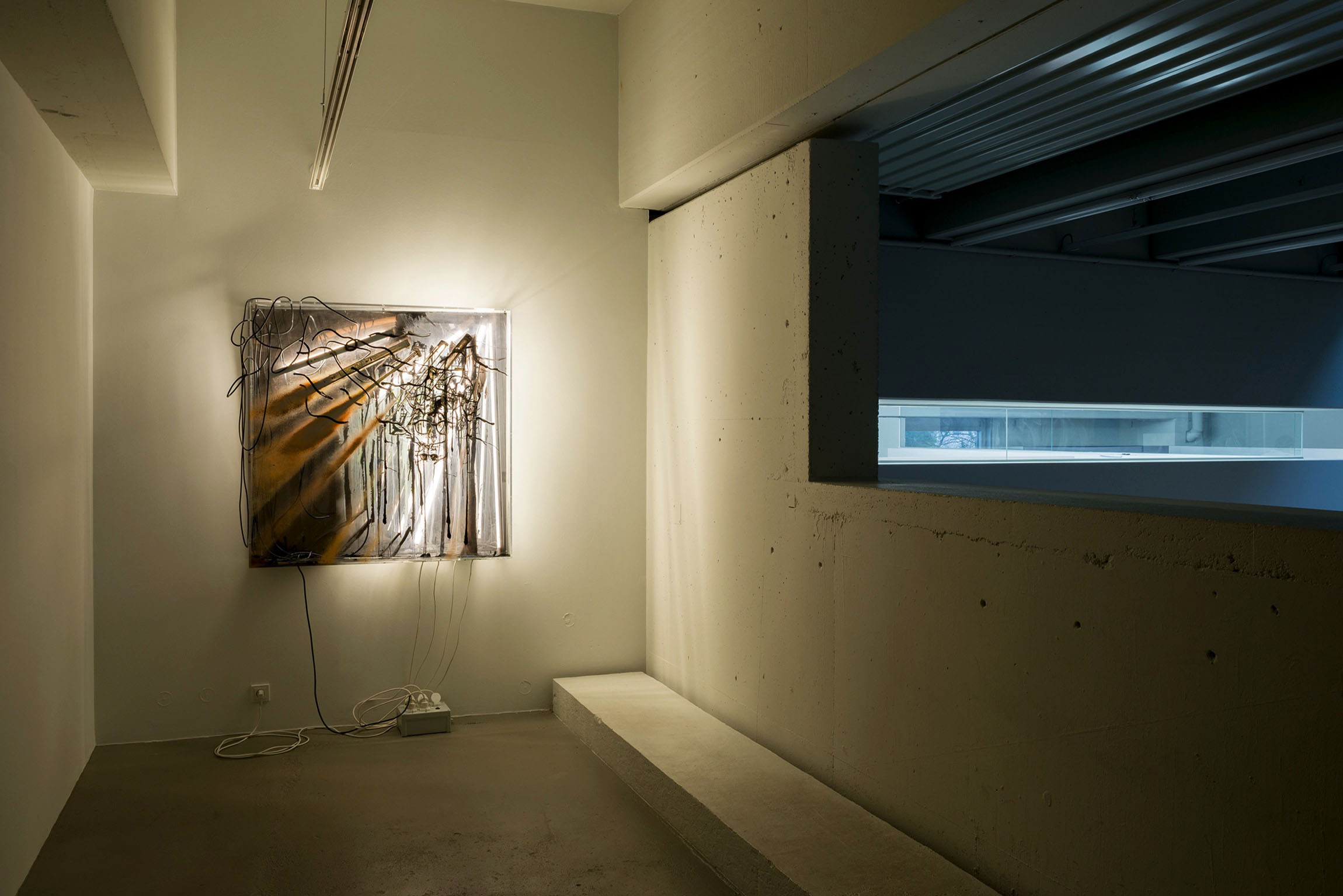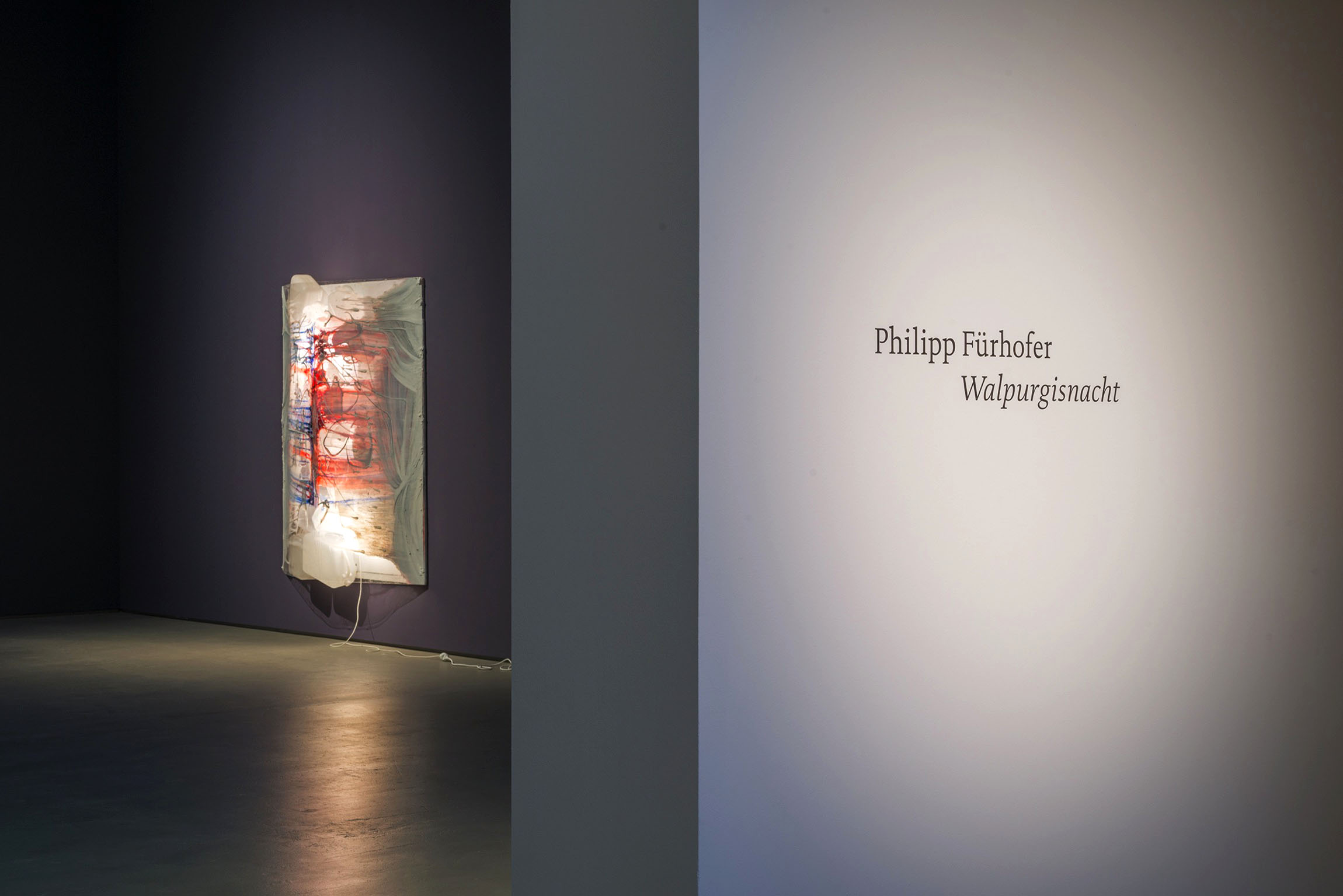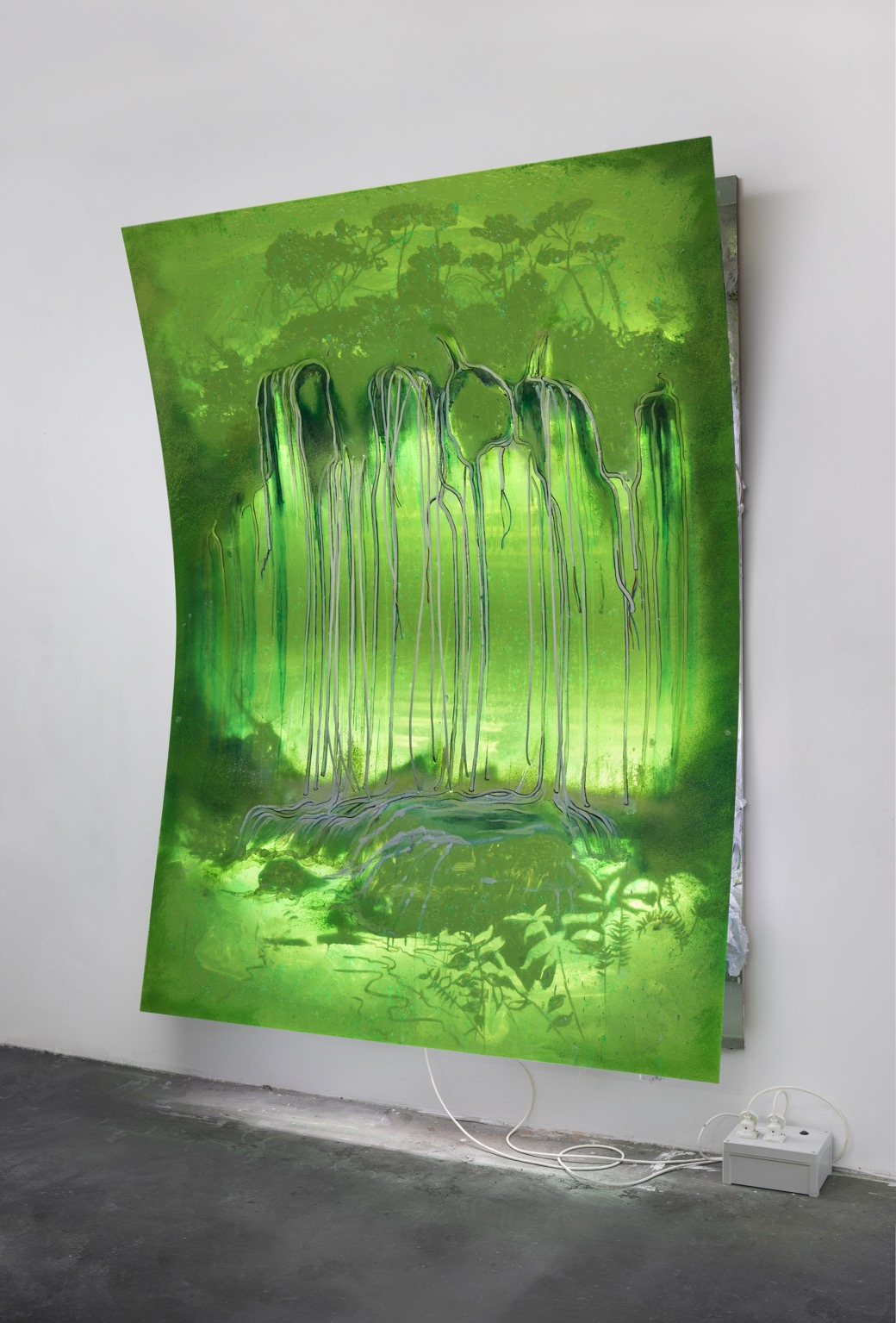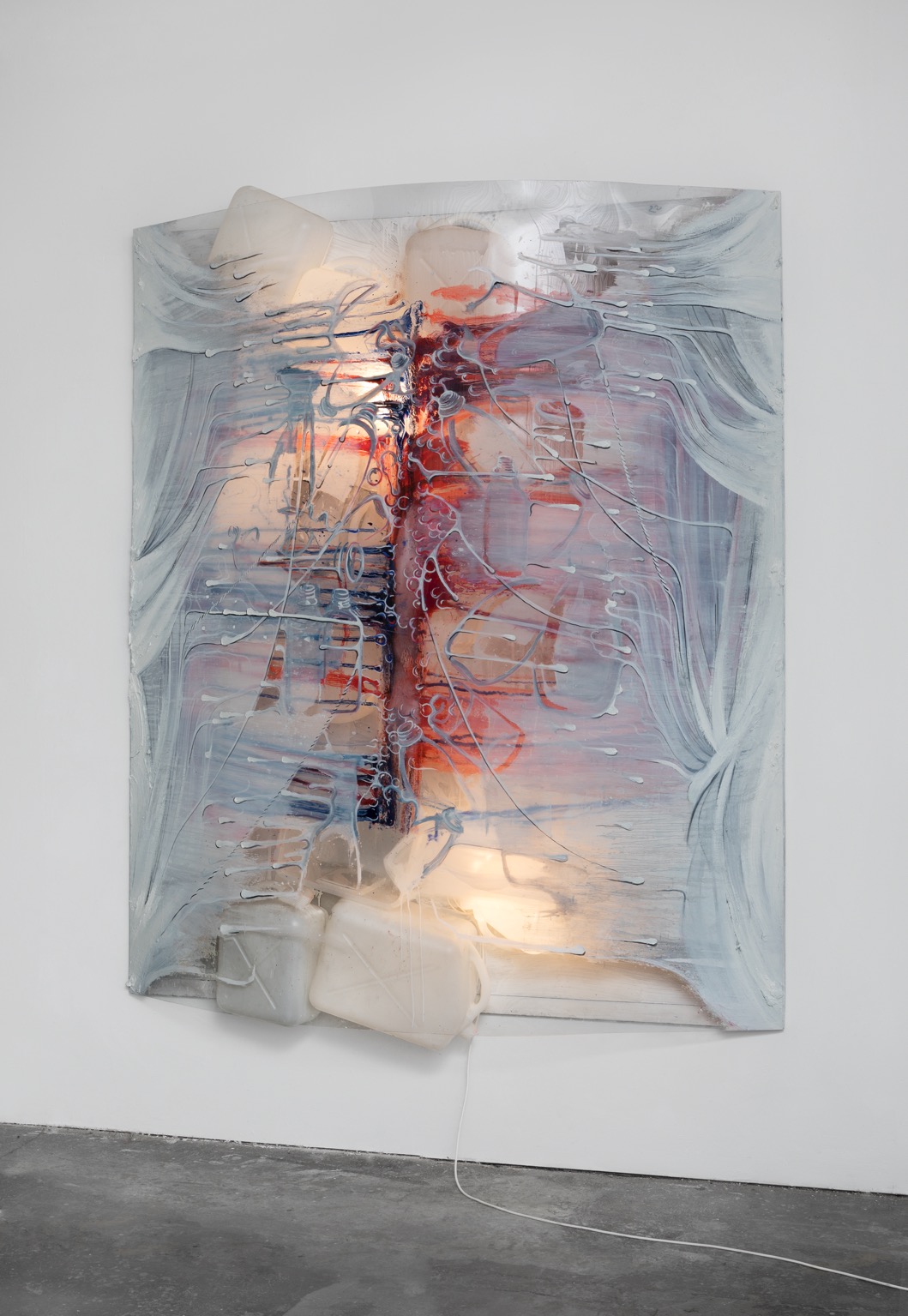Philipp Fürhofer
Walpurgisnacht
Works

Walpurgisnacht I
2017
Acrylic and oil on acrylic glass box, two-way mirror, electric wire, lightbulbs, LED lights, control box and wood
200 × 190 × 23 cm

Green Falls
2017
Acrylic and oil on acrylic glass, two-way mirror, electric wire, plastic film, LED tube lights, control box and wood
230 × 178 × 37 cm

Wolfsschlucht
2017
Acrylic and oil on acrylic glass box, two-way mirror, electric wire, crayon, LED lights, control box and wood
200 × 185 × 24 cm

Walpurgisnacht II
2017
Acrylic and oil on acrylic glass box, two-way mirror, electric wire, LED tube lights, control box and wood
200 × 200 × 24 cm

Vom Himmel durch die Welt
2017
Acrylic and oil on acrylic glass box, two-way mirror, electric wire, plastic film, LED tube lights, control box and wood
180 × 346 × 40 cm

Gedankenwald
2017
Acrylic and oil on acrylic glass box, two-way mirror, LED tube lights, control box and wood
130 × 128 × 38 cm


Tauwetter
2017
Oil on acrylic glass box, two-way mirror, electric wire, LED tube lights, control box and wood
125 × 140 × 38 cm

The Clearing
2017
Acrylic and oil on acrylic glass box, electric wire, LED tube lights and wood
140 × 140 × 35 cm

Tristan
2017
Acrylic and oil on acrylic glass, electric wire, plastic canisters and LED lights
200 × 170 × 26 cm

Tequila Sunrise
2017
Acrylic and oil on acrylic glass box, two-way mirror, electric wire, lightbulbs, LED light and wood
93 × 93 × 25 cm

Nimmermehr
2017
Acrylic, oil and oil pastels on acrylic glass, photo prints and wood
120 × 120 × 30 cm

Rheingold
2017
Acrylic and oil on acrylic glass, electric wire, lightbulbs and wood
120 × 120 × 30 cm

Schlafwandler
2017
Acrylic, oil and oil pastels on acrylic glass, photo prints and wood
121 × 123 × 23 cm
Text
The 13 works that make up Philipp Fürhofer’s second exhibition at Galerie Judin are illuminated objects and assemblages rich in drama, which combine two long-standing themes in his art: landscape and the human body. These atmospheric panoramas could have sprung from the stage sets designed by Fürhofer to the acclaim of opera-goers all over Europe; rhythmical light sequences forming chromatic spectacles that bathe the scenery in changing moods, piercing or marking it in surprising ways. Meanwhile, painted contours of larger-than-life human bodies acquire striking form as they segue into unexpected materials; the identity of the characters remains vague – a head can rarely be discerned, a face never.
All the exhibits by Fürhofer (born in 1982) were made in 2017. In most of them, the two visual worlds come together, as in the work that gives the show its Witch Sabbath name: Walpurgisnacht II. When the light is off, a wonderfully pictorial male torso fills the picture space. Black cables winding around the two sides of the box carry his dark chest hair into the third dimension. As soon as the box lights up, the painted and sculptured hairs transmogrify into the branches of two tree clusters, one on each side. The body almost disappears – and yet it does not merge with nature, for the painterly torso still shimmers through. By adjusting position, the viewer sometimes loses sight of this illusion too, and then the coarse, even profane materiality of the work prevails. The body becomes a stage for a mystical landscape of desire – and breaks open a psychological dimension.
Continue reading
With these diffuse identities and associated landscapes, Fürhofer creates figures we can identify with, allowing us to project personal and social desires, rather like those figures in German Romantic paintings that stand with their backs to us. They embody a yearning, as valid then as it is now, for individual sensation and the dissolution of personal boundaries; yearnings of the kind thrown up by an industrial society, which is more than a mere presence in Fürhofer’s works. Landscapes, especially forests, as a powerful identity factor, are an emotional and intellectual sounding board – another phenomenon of cultural history that dates back to the nineteenth century.
Despite these roots in art history, Fürhofer’s approach could hardly be more contemporary, for these works readily reveal the secrets of their power: the switch boxes with protruding cables on the floor flag up the control mechanism behind the machinery of illusion, the lamps are always visible. Even the more banal components are always there to be seen. This by no means steals the magic from Fürhofer’s works. If anything, the artist and his art make us their accomplices. We wait patiently while the colored acrylic glass, light bulbs, mirrors and cables turn into a rising sun (Tequila Sunrise). We search out the right angles and linger until we can grasp the more complex cycles in their entirety, trying to figure out all those levels of meaning and references that trigger the switch. It is through this interaction with the viewer that Fürhofer’s works fully emerge. Almost always we are reflected in the surfaces, literally finding ourselves in the works.
Fürhofer recently produced a similarly exciting dialogue between work and viewer, entitled [Dis]connect, at the Schirn Kunsthalle in Frankfurt. Coinciding with an exhibition on the history of the diorama, he transformed the museum’s rotunda, inserting two reflective ceilings and switching the light to generate two different spatial effects. Visitors either look up and see their own reflection in a smooth mirrored foil, or find themselves lost in an apparently endless repetition of the two upper stories of the rotunda. Through this interplay, the view outward mutates into an inward gaze. A longing for infinity and introversion – again, key elements in German Romanticism – is echoed in many of the titles and almost always with a musical reference (as in Wolfsschlucht and Tristan).
How versatile, profound and effective Fürhofer’s reflections on German cultural history are, can also be observed currently at the Kunsthalle in Munich. For the show You are Faust: Goethe’s Drama in the Arts, he has designed a stage-like tour through the exhibition, guiding visitors through responses to the Faust theme in music, art, literature, and theatre. It is no surprise that Philipp Fürhofer was assigned this task: he combines traditional visual narratives with a contemporary, personal artistic idiom, and plunges straight into a direct dialogue with the viewer, transforming motifs from cultural history into spaces for atmospheric experiences that exude a power few can resist.


